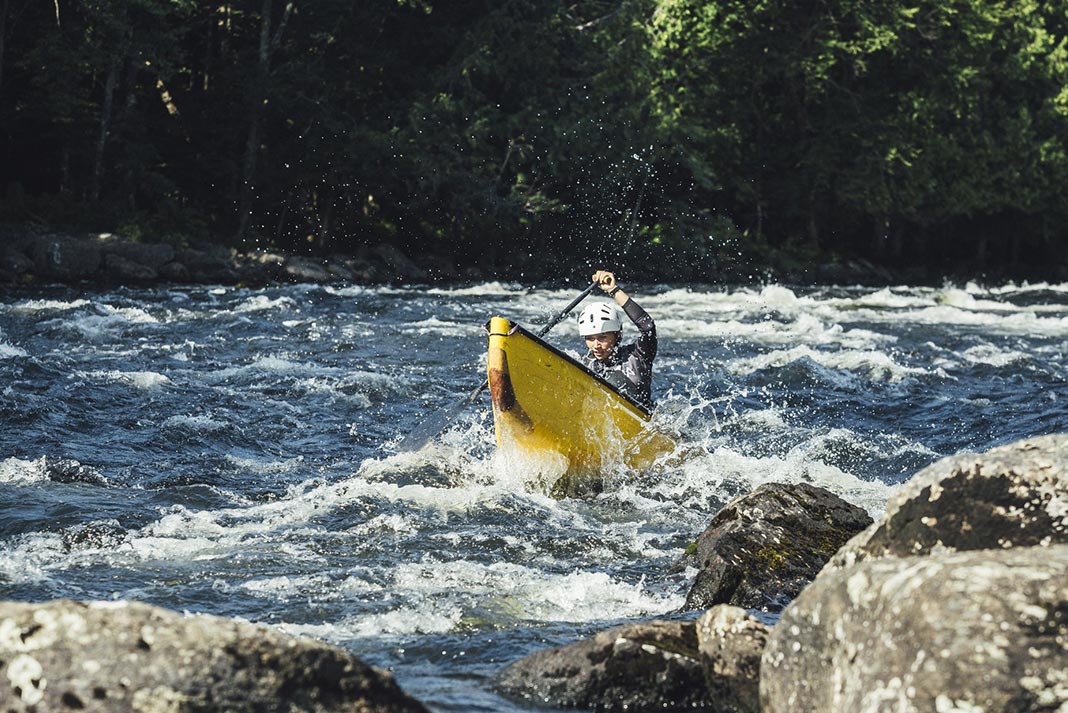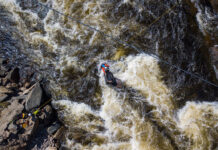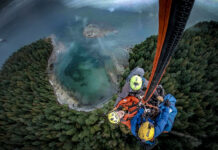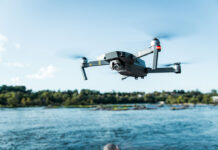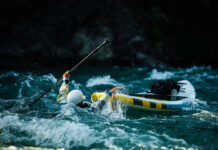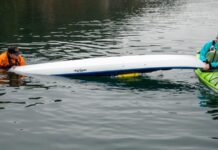On remote expeditions, your canoe is your number one survival tool. Losing it is not an option. When traveling solo on whitewater expeditions, the only self-rescue gear I have is 100 feet of rope (one 70-foot throw bag plus the painter rope) attached to the canoe and to me.
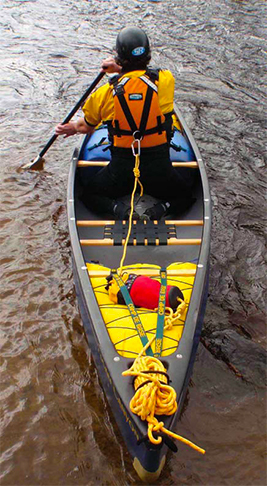
If I flip, this setup frees my hands to swim hard and reach shore quickly with enough slack to hold my canoe in a dynamic way.
I clip into the rope via a quick-release belt on my PFD. Of course, it’s potentially very dangerous to swim attached to 100 feet of rope—it can snag on rocks and other obstructions, pinning you in the current—but in continuous, high-volume rapids with no recovery pools, this method may be the only option to retrieve your boat.
I only use this solo canoe self rescue technique when the risk posed by losing my boat outweighs the risk of swimming with the rope.
Using this technique has saved my life. Traveling solo on the Nahanni in a September snowfall, I flipped in Wrigley Whirlpool, a nasty rapid that took me by surprise 5 km upstream of its indicated location on my map.
I had just enough rope to swim to shore before the line shuddered with the load of the canoe. With the strong current, swimming my fully loaded canoe to shore would have taken far more time than I had in the icy water.
This article was originally published in Rapid‘s Summer/Fall 2010 issue. Subscribe to Paddling Magazine’s print and digital editions here, or browse the archives here.
Your remote expedition survival tool. | Photo: Destination Ontario



